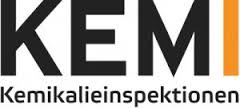Chemycal has been acquired by 3E
Learn MoreChemycal has been acquired by 3E
Learn MoreDiscover how Chemycal PRO helps you boosting your regulatory monitoring:

The decisions on the four substances were unanimous in medlemsstaskommittén. The topics will be included on the candidate list in January 2017.
The highly fluorinated PFDA substance may be present in textiles treated to resist water and stains. PFDA has been found in the impregnation spray, outdoor clothing, carpets, ski wax and sandwich paper. The subject is included in the group highly fluorinated substances, PFAS, which are extremely persistent in the environment. Chemicals Agency is working to reduce the use of these substances, especially for the protection of groundwater and drinking water from contamination. Highly fluorinated substances are used at low levels in many products because they have the ability to form smooth, water, grease and dirt-repellent surfaces.
Bisphenol A is used in the manufacture of polycarbonate and epoxy resins. The subject is suspected endocrine disruptor and are banned in baby bottles in the EU. In Sweden it is also forbidden at the relining of drinking water pipes, as well as in the paint and coatings in the food packages for children up to three years. The European Commission recently decided to ban from January 2020, on the bisphenol A in thermal paper, which is used among other cash receipts.
CONTINUE READING ON www.kemi.se (Swedish)
2013 © MyChemicalMonitoring. ALL Rights Reserved. About Us | Terms and Conditions